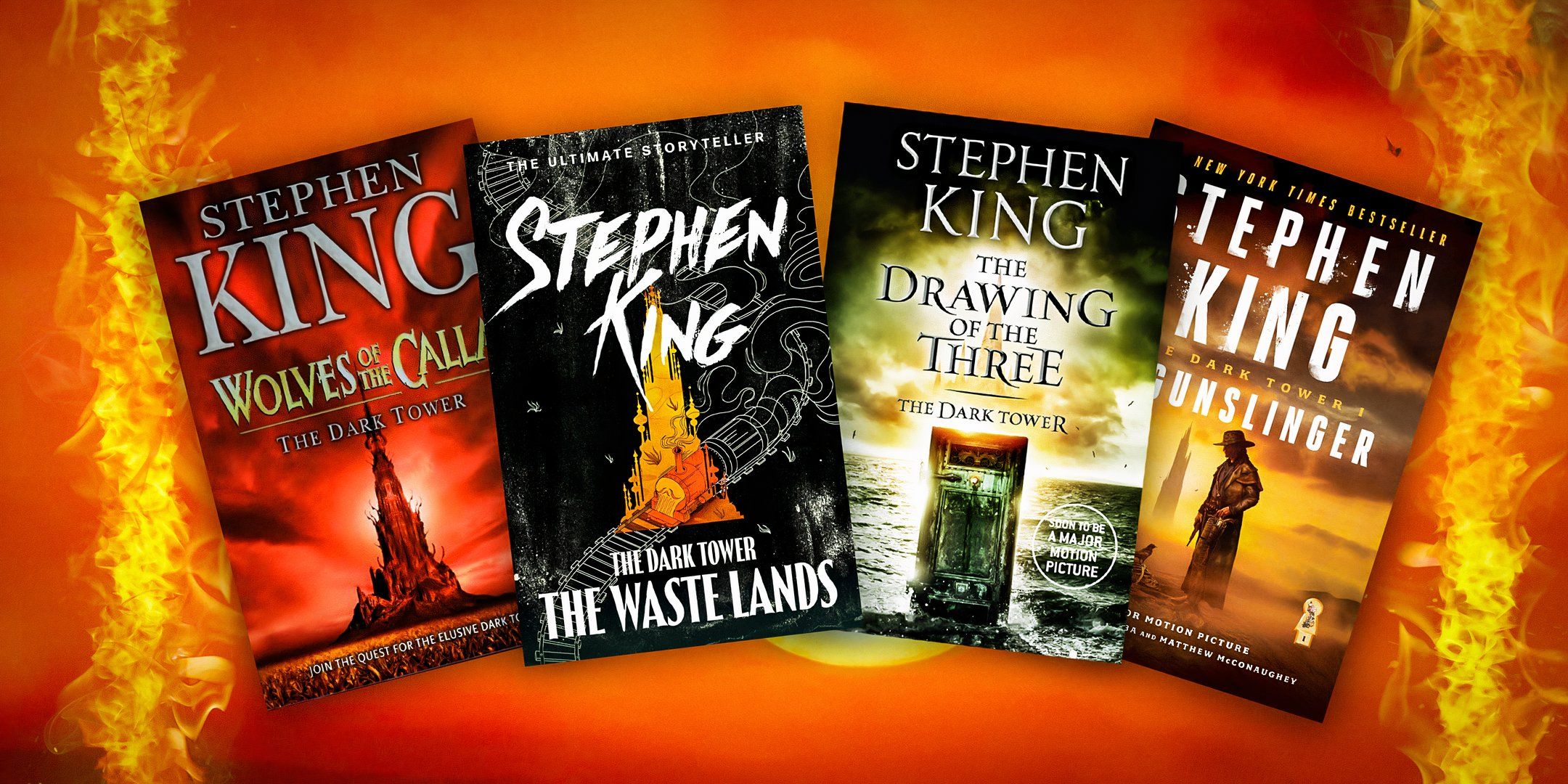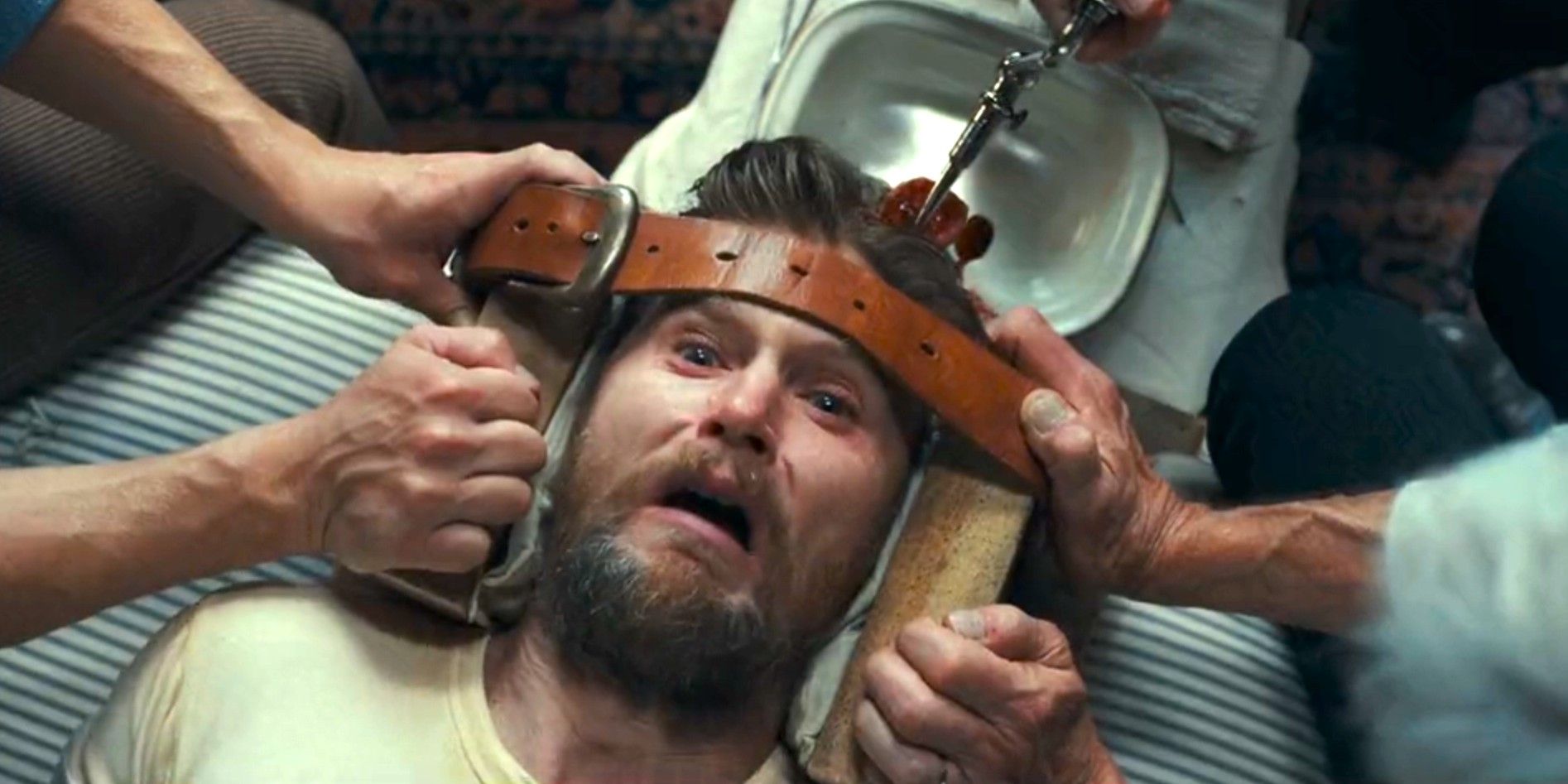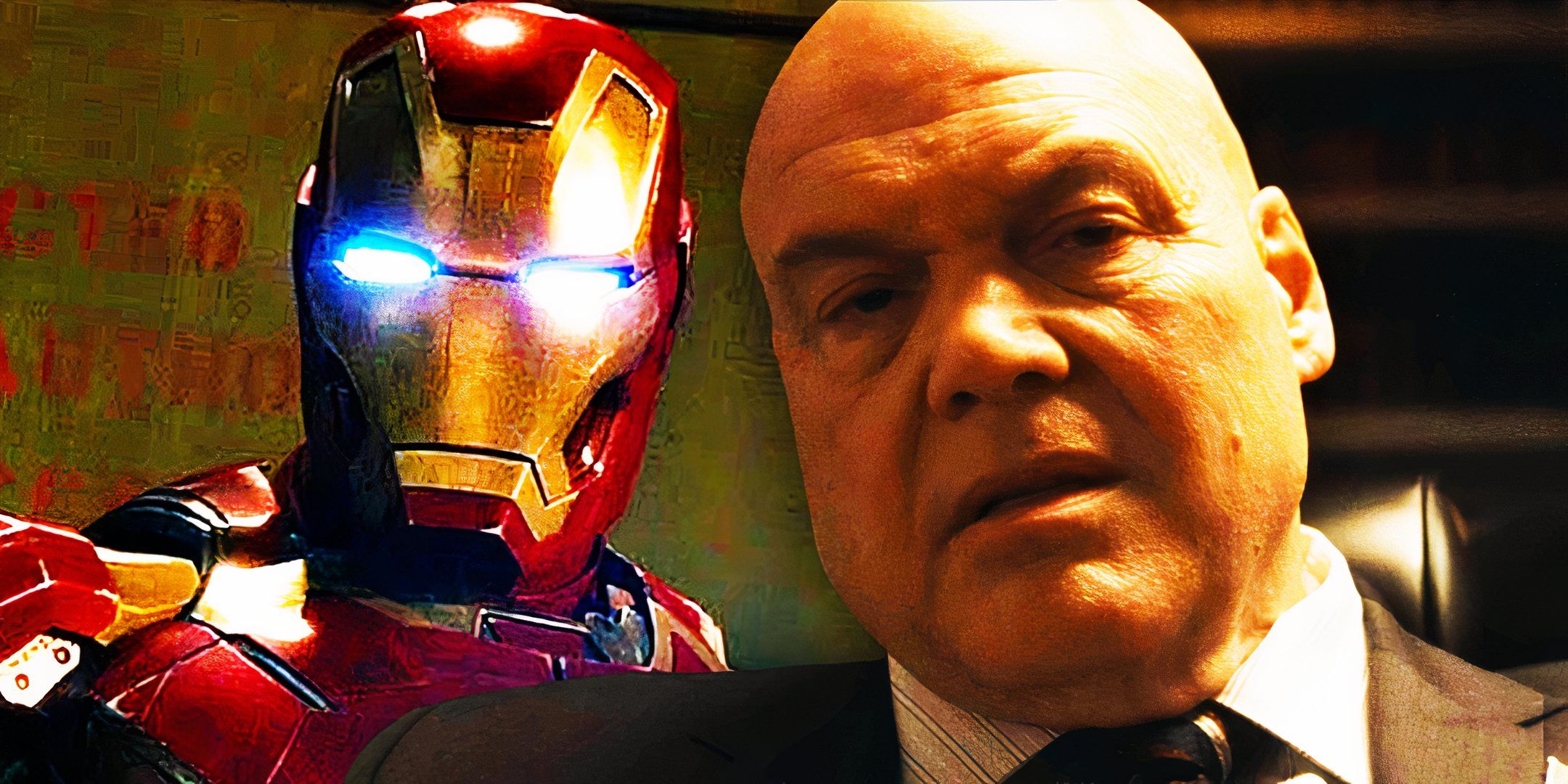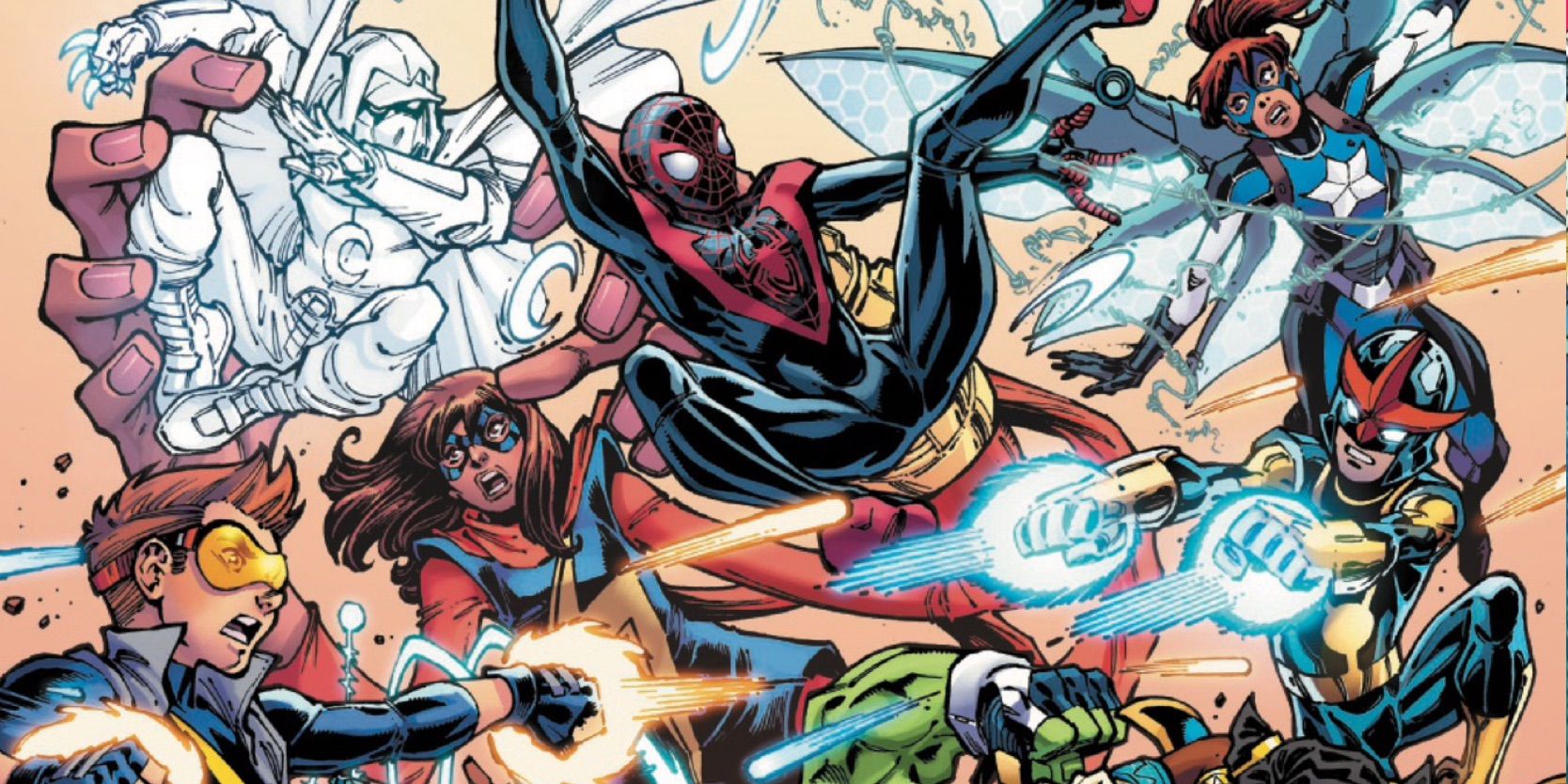How To Read Stephen King's Dark Tower Books & Stories In Order (Chronologically & By Publication Date)
Summary The Dark Tower series, Stephen King's magnum opus, spans decades and intertwines with many of his other stories.
Follow gunslinger Roland Deschain on his quest to find the Dark Tower and unravel the vast universe it holds.
The best way to approach the Dark Tower books is either in publication order or chronologically, depending on your preference.
Stephen King's The Dark Tower series is his magnum opus, but with such a sprawling series of novels and multiple short stories across decades, it can be difficult to know the best reading order for those just jumping in. The Dark Tower and Stephen King's macroverse, is sprawling and vast. What originally started as just the seed of an idea in King's mind in the 1970s eventually grew into his magnum opus and the series through which so many of his other books and stories are interconnected.
The story of the series follows gunslinger Roland Deschain, a man who is grimly determined – and fated – to find the Dark Tower, the universal construct that holds up not just his world, but multiple worlds. Along the way, he's joined by companions who become part of his ka-tet, or fated group, with each playing an important part in Roland's quest. Weaving together fantasy, horror, science fiction, Westerns, metaphysics, Arthurian legend, and more, even the best Dark Tower books are not a read for the faint of heart. Still, it can help to know where to start when reading The Dark Tower books, and in what order to read them before jumping in.
Related With 1 Word, Stephen King Foreshadowed The Dark Tower's Biggest Ending Twist Stephen King has added one word to the revised edition of The Gunslinger, and it perfectly foreshadows Roland Deschain’s fate in beloved series.
The Dark Tower Series Was Published Across Three Decades
Book/Story Title Publication Year The Dark Tower: The Gunslinger 1982 The Dark Tower II: The Drawing of the Three 1987 The Dark Tower III: The Waste Lands 1991 The Dark Tower IV: Wizard and Glass 1997 "The Little Sisters of Eluria" 1998 The Dark Tower V: Wolves of the Calla 2003 The Dark Tower VI: Song of Susannah 2004 The Dark Tower VII: The Dark Tower 2004 The Wind Through the Keyhole 2012
For the most part, Stephen King's Dark Tower series is a relatively straightforward read. However, like many stories that grow larger in the author's mind as the years go on and turn into legitimate fictional universes, The Dark Tower series does have a few twists and kinks in its timeline. He started with The Gunslinger, published in 1982. Technically, the original idea started as a novella published all the way back in 1978, but then he expanded it into a full novel, and later expanded and revised it again in 2003.
Halfway through the series, there's a bit of a jump, as the fourth book, Wizard and Glass, is a story within a story, with the inner story being one long flashback to Roland's teenage years. The year after, King also published "The Little Sisters of Eluria" in the anthology Legends before later putting it in his collection Everything's Eventual in 2002. Finally, eight years after the last Dark Tower novel, King published the novella The Wind Through the Keyhole, which takes place just after the events of Wizard and Glass.
The Gunslinger (1982)
The Book Had First Been Published As A Novella
The first book, The Gunslinger, launches the story of Roland Deschain, the last gunslinger of Gilead. Roland, also simply known as the Gunslinger, is on a quest to reach the Dark Tower, the nexus of not just his world of In-World, but all worlds, including our own. The first book sets up his pursuit of his arch-nemesis, the Man in Black, a.k.a. Walter Padick, a.k.a. Randall Flagg, the many-aliased main antagonist of the Dark Tower series and the most consistent villain of Stephen King's entire macroverse, who seeks to overthrow the tower and throw the universe into chaos.
The book also introduces readers to Jake Chambers, a young boy who falls into Roland's world from 1970s New York City and later becomes Roland's adopted son, of a nature. Thanks to the gunslinger, Stephen King fans are familiar with the iconic opening line of The Gunslinger: "The Man in Black fled across the desert, and the gunslinger followed." But thanks to Jake, they're also familiar with the line, "Go, then. There are other worlds than these."
"The Man in Black fled across the desert, and the gunslinger followed."
Related Stephen King's Gunslinger Revised Edition Fixed 1 Major Dark Tower Villain Problem The revised and extended edition of Stephen King's The Gunslinger made a slight change that actually had huge implications for the series' villains.
The Drawing Of The Three (1987)
The Team Comes Together
The second book in The Dark Tower series in order of publication is 1987's The Drawing of the Three. The Drawing of the Three is where the idea for The Dark Tower series became more than an idea, and started to grow into the fully fleshed-out world that would define Stephen King's interconnected literary universe. It is the book where the team comes together, so to speak. In the second novel, Roland steps through doorways leading to various decades in our world, from where he'll collect more companions and champions to help him on his quest to reach the Dark Tower.
Those companions are Eddie Dean, a heroin junkie from 1980s New York City, who is behind the door labeled "The Prisoner." Behind the door labeled "The Lady of Shadows" is Odetta Holmes/Detta Walker, later known as Susannah Dean, a woman with dissociative identity disorder thanks to a traumatic childhood incident. Later the group will include Jake, Oy, and, for a brief time, Father Callahan from 'Salem's Lot. Each plays a critical role in Roland's fated quest, with each of them being fated themselves.
The Waste Lands (1991)
The Lore Of The Dark Tower Expands
In The Waste Lands, Roland reunites with Jake Chambers, who is behind the door marked "The Boy." The last of the group is Oy, a clever and loyal billy-bumbler (a cross between a raccoon, a groundhog, and a dog) who becomes attached to Jake. The Drawing of the Three starts to expand on the lore of the Dark Tower, introducing the Beam Guardians who were designed to protect the Beams, the literal beams of energy that hold up the Dark Tower. Along the way, they travel through the wastelands of Roland's world and the dying, corrupt city of Lud, emphasizing how the Tower's breakdown is starting to affect Roland's world.
Wizard And Glass (1997)
A Story With A Story
1997's Wizard and Glass, the fourth book published in the Dark Tower series, is unique because the majority of the novel is a story with a story, one giant flashback. So, while it is the fourth book in the series, most of the events in Wizard and Glass are actually some of the earliest in the timeline, chronologically. The story takes as the companions are traveling through the Waste Lands after having escaped Blaine the Monorail, a train that has gone insane through sentience and the world breaking down.
The story Roland tells is from when he was a young man, off on his first mission as a gunslinger with his friends Cuthbert and Alain. While stationed in the town of Hambry, Roland meets and falls in love with his first love, Susan Delgado. The story that unfolds revolves around Roland and his allies discovering a widespread, nefarious plot in the outer barony, and it all ends in tragedy and death that shapes Roland forever.
The Little Sisters Of Eluria (1998)
A Second Story Set In The Past
In a slight detour from the main book series, the short story/novella "The Little Sisters of Eluria" was published in the 1998 collection Everything's Eventual. Apparently, King was in a backward-looking frame of mind in those years, as it's the second entry in the Dark Tower universe to tell a story set in the past. Unlike Wizard and Glass, the main story of which is set in the continuing chronology but tells a story about the past, "The Little Sisters of Eluria" is just a story from the past, period.
In it, Roland has barely begun his quest for the Dark Tower, and it's not long before the events of The Gunslinger; the gunslinger is already pursuing the Man in Black across the desert. The story of the novella is a side quest, if you will, involving Roland being injured by a group of slow mutants in the abandoned town of Eluria and taken in by a group of nuns who call themselves the Little Sisters of Elura. However, as with many things in Roland's world, all is not as it seems and he finds himself in greater danger than he anticipated.
Wolves Of The Calla (2003)
The Last Temporary Member Of The Fated Group Is Met
Jumping back into the current timeline is 2003's Wolves of the Calla, the fifth book in the main Dark Tower series. After the events of The Waste Land, Roland and his companions travel to the small outer town of Calla Bryn Sturgis. There, they stumble across Donald Callahan, who first appeared as a priest in Stephen King's 1975 novel 'Salem's Lot and the continuation of his story is described in the Dark Tower book.
Through Donald Callahan, they learn that roughly every 23 years, the town has been besieged by agents of the Crimson King, the Man in Black's boss, so to speak, who steal children from the town. It gets complicated without reading the book, but suffice it to say, Roland and his friends must protect not only the town, but a single red rose that has ties to the Dark Tower. If Calla Bryn Sturgis or the rose fall, their quest is doomed.
Song Of Susannah (2004)
Song of Susannah, the sixth book in the main Dark Tower series, is when things start getting really meta and complicated. Unsurprisingly, Song of Susannah is also the book in which most people, if they're going to, jump off the Dark Tower series and abandon it. The reason it's so meta is that it's the story in which Stephen King becomes a character in his own story – not as an avatar, or a surrogate, but as himself. Stephen King writes himself, the author, into the story of the Dark Tower. Roland's group discovers that their fate is tied to King's writing, and part of the quest of the story is to find the author Stephen King in our world and convince him to continue writing the series.
Unsurprisingly, Song of Susannah is also the book in which most people, if they're going to, jump off the Dark Tower series and abandon it.
The Dark Tower (2004)
The Saga's Ending Leaves Their Fates Ambiguous
The Dark Tower, the final book in the main timeline – or just the beginning, depending on how you look at it – tells the story of the final battle of Roland and his allies against the Crimson King and his agents. The side of good and order wants to protect the Dark Tower and keep the multiverse intact; the side of chaos wants the Tower to fall and plunge the multiverse into darkness and destruction. The end of the series, much to the delight of some and the frustration of others, is left ambiguous, with the book suggesting that the fates of Roland and his friends may not, ultimately, be their final fates.
The Wind Through The Keyhole (2012)
Stephen King Returned To The Dark Tower World Eight Years Later
Eight years after publishing The Dark Tower, Stephen King decided he wasn't quite finished with the story yet, as he published one more short book, The Wind Through the Keyhole, in 2012. Similar to Wizard and Glass, it involves Roland telling his friends a story that happens before the events of the main story. The framing story is set between the events of Wizard and Glass and Wolves of the Calla, but the main story is another from Roland's youth, this time involving a mission with another gunslinger named Jamie De Curry.
Dark Tower Series & Stories In Chronological Order
The Story Jumps Around Somewhat
Book/Story Title Publication Year "The Little Sisters of Eluria" 1998 The Dark Tower: The Gunslinger 1982 The Dark Tower II: The Drawing of the Three 1987 The Dark Tower III: The Waste Lands 1991 The Dark Tower IV: Wizard and Glass 1997 The Wind Through the Keyhole 2012 The Dark Tower V: Wolves of the Calla 2003 The Dark Tower VI: Song of Susannah 2004 The Dark Tower VII: The Dark Tower 2004
Those who don't mind the story jumping back and forth a few times should stick with the publication order, as King wrote them, if only for the fascination of watching how the story evolved in King's mind across decades. For those who prefer a more linear read, however, reading The Dark Tower books in chronological order might be more beneficial – though, it has to be said, starting The Dark Tower series with anything other than "The Man in Black fled across the desert, and the gunslinger followed" might be considered sacrilege to King's most Constant Readers.
It has to be said, starting The Dark Tower series with anything other than "The Man in Black fled across the desert, and the gunslinger followed" might be considered sacrilege to King's most Constant Readers.
In truth, The Dark Tower books are so sprawling and the world Stephen King creates so vast that it doesn't really matter what order you read them in. Most Stephen King fans would recommend publication order, but considering King kept revising and expanding on the lore, those who have already read the series once might get a lot out of a chronological reread. Regardless of how you choose to read it, you're bound to be sucked into the complex and sprawling mythology of King's Dark Tower universe.











COMMENTS